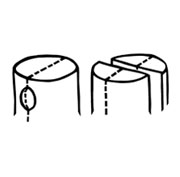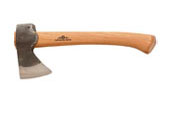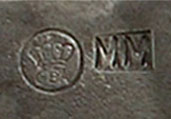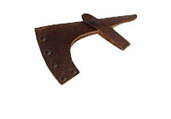Cleaving is done by riving, splitting fibres apart along their weakest path. This work may appear strenuous, but is far less effort than rip sawing by hand. It is first done radially, to split the log into wedged segments. Careful alignment is needed for logs with medullary rays, such as oak, which are hard to split through but easier to split between.
Cleaving with wedges: This usually begins from one end of a log, by driving a wedge into the end of the log using the Maul with it’s hardened poll. It can then be driven further in . A short log may be split entirely from one end, a long log will require an initial split to be extended along the log by the use of further wedges, Short logs are cleaved vertically, long ones horizontally. The ability to use several tools at once makes the use of an axe and wedges capable of cleaving far heavier logs than a froe.
Cleaving with a froe: The Froe is used in combination with a wooden mallet to split wood very finely along the grain, to make planks, wooden shingles, or kindling; it is safer and more accurate to use than an axe as the blade is not swung but placed on the wood and stuck with a mallet. The blade can be twisted in the wood by rotating the handle using it as a lever to multiply the force upon the blade, tearing the wood apart with ease. the direction of the split may be guided by twisting one way or the other. The froe must be used gradually from one end. The froe has a wider blade, and so may give a more precisely flat surface when cleaving wide timber, such as for roofing shingles.
It is common to start cleaving a log with an axe, finish the first heavy splits with wedges, then use a froe to make the finished items.





